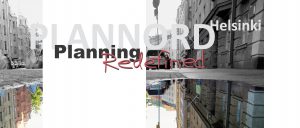Monthly Archives: August 2017
Planning for the Future – Narratives of Urban Waterfronts at Plannord2017
Speaking today (17.8.2017) at Plannord2017 on the topic of “Planning for the Future – Narrating crisis and agency in literary fiction and planning narratives of the urban waterfront”

From the abstract:
“What can be known about the future, what is there to fear, and what role is there for human agency, individually or collectively – for acting upon the future? These questions are addressed here from the perspective of narrative frames, with a specific reference to the stories that are told of the near future of the New York waterfront in. Drawing on a range of textual sources, from policy documents and strategy texts to literary novels that dwell on the challenges and possibilities of the urban waterfront, this paper wants to sketch a move, in narratives and research, from knowledge to action, from preparing for the future to acting upon the future. In doing so, this paper also traces the narrative limits of policy and planning texts, and of fictional texts, when envisioning slow-burning crises.”
The paper is part of my ongoing research of future visions of cities at the water: more about that here.
